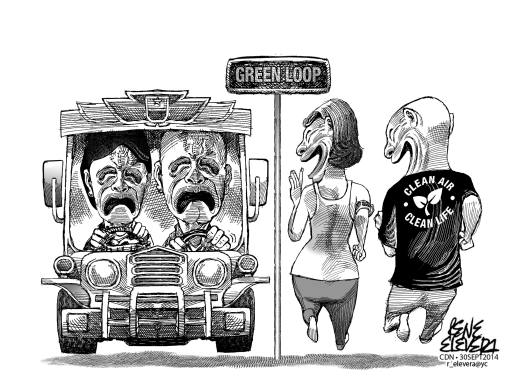Sunday’s experiment in road sharing in Cebu City was a risk-taking eye-opener.
If only roads could expand like magic, the event would have been a come-as-you-are parade for citizens to happily walk on streets without worrying about getting run over by an SUV.
Nobody got sideswiped by a jeepney but there were a lot of upset commuters and drivers caught off guard by the road closures.
The long-term benefits of pedestrianization will take longer for Cebu urbanites to see and appreciate.
They have to “see” it make their lives better.
Sunday was a limited glimpse of a concept that may provide that scenario, but the post-event assessment will likely be full of apologies to road users who were inconvenienced by the changes of half-road access to people and cars.
Does it mean the scheme was a failure?
For those who expected smoother traffic, this was a disappointment. But those who take the long view know that fixing Metro Cebu’s unplanned, chaotic urban growth is just as painful as standing still, and that waiting for the government to come and fix the problem is not an acceptable mindset.
One value of the trial was a reality check of the Cebuanos’ tolerance for disruptive change.
Business owners who lost customers scoffed. Taxi and jeepney drivers who didn’t make their daily boundary are sore. It’s the convenience of the riding public – not private car owners – that has to be satisfied as Cebu City cries out for a viable mass transit alternative to PUJs that form the backbone of public transportation.
So before organizers suggest a repeat date, they will have to consider:
1. Traffic congestion was severe. Within 30 minutes from the start of the new routes, vehicles slowed to a crawl in the loop of four roads of Escario Street, Gen. Maxilom Avenue, Osmena Boulevard and Gorordo Avenue.
The sight of bumper-to-bumper traffic did little to ease complaints of exasperated people stuck in cars, jeepneys and taxis. A smaller scope for a pedestrian-friendly experiment like the heritage-rich Parian district downtown on a Sunday may be more manageable.
2. The volume of vehicles, even on a “light” Sunday, overwhelmed the constricted space of the allotted two lanes.
It was a magnified view of Metro Cebu’s perennial problem: too many motor vehicles, not enough roads. Can you imagine what it would have been like on a working day?.
3. Many commuters didn’t know what was going on. They saw traffic on half of the road while the other half was near empty, with a scatter of bikers, walkers and skateboard thrill seekers. A full-blown public information drive would have helped manage cut the grief. People have to understanding why they have to suffer “short-term pain” for long-term gain.
4. Could traffic have flowed more smoothly with more visible Citom enforcers?The 30 Citom guides were not enough. Red-shirted radio group volunteers tried to step in to direct or rather wave vehicles away from the pedestrian-designated lanes. More warm bodies and signages were needed.
Some impatient – or clueless – drivers navigated their vehicles into the wide open lanes reserved for walkers. Safety was a real risk
“Mag-angay ta sa daan” is the battle cry of the Movement for a Livable Cebu in trying to open the public’s mind to a pedestrian-friendly instead of a car-worshiping culture.
The underlying idea of “Let’s share the road” presupposes that everyone will fit in the road.
Organizers will have to seriously consider now whether the new wine of pedestrian-friendly values can still be forced into the old skins of Cebu City’s cramped roads.
